5. Ostian Mintmarks
Mintmarks started to appear around the middle of the 3rd century as a means of controlling mint officials, should coins for example be found to be underweight. The Roman mintmark was found on coins from 248 AD.
On coins minted at Ostia, the mintmarks are always found on the reverse of the coin in the area known as the exergue. This is not always the case however with other mints, as parts of the mark can be found in the body of the reverse image or even on the obverse face.
The mintmark is formed from three elements:
a) A letter. In the case of Ostia the letters M (moneta) or P (pecunia) on gold and silver issues.
b) Letters which signify the mint, in this case OST.
c) The officina, workshop or shift letter. On earlier Ostian coins the letters used were the Greek letters A, B, C and D (i.e. MOSTA, MOSTB, MOSTΓ and MOSTΔ). These Greek letters were then replaced by the Latin letters P (primus), S (secundus), T (tertius) and Q (quartius).
All Maxentian aurei produced up to October 312 AD had the mintmark POST, with no indication of which officina had produced them. On the silver coins produced by Maxentius in the same period, POSTΔ and MOSTA to MOSTB were used. From October 312 AD to c. May 313 AD, POST* is found on some of the half solidi of Licinius and the double solidi of Constantine, whilst POST is found on the solidi of Constantine, Maximinus and Licinius, and the remaining half solidi of Licinius.
Plates 3 to 8 show some of the mintmarks for Ostia minted coins:
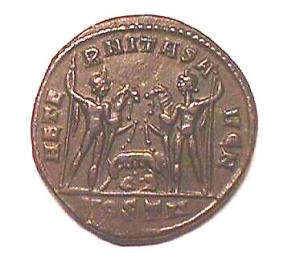 |
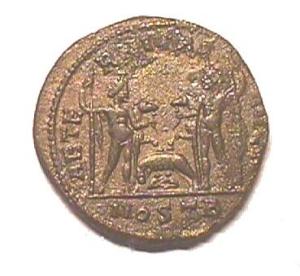 |
|
Plate 3: MOSTA
|
Plate 4: MOSTB
|
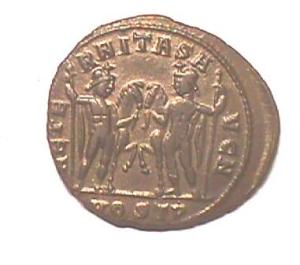 |
 |
|
Plate 5: MOSTP
|
Plate 6: MOSTS
|
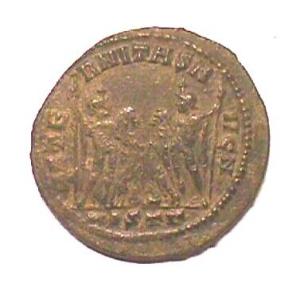 |
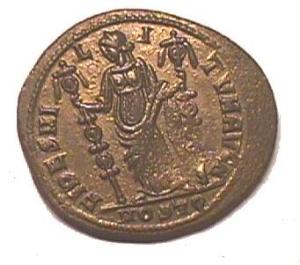 |
|
Plate 7: MOSTT
|
Plate 8: MOSTQ
|
It is difficult to be certain, but it would appear that all four officinae at Ostia were in operation at the same time. The reason for suggesting this is that there does not seem to be any temporal connection between mintmarks and the dates of issue of the coins (this would seem to be borne out by the information in an article by Jules Maurice). In addition, this in turn suggests that the mintmark letters refer to different shifts working in a single officina.